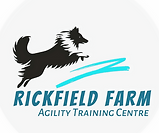Is Agility Right for you and your Dog
The beauty of agility is that it combines the physical and mental. You and your dog must use both body and brain. Watching agility on TV might look like the dog is doing all the work, but there is much more to it for the "handler".
Dog agility training is a dynamic and rewarding sport that promotes physical fitness, mental stimulation, and a strong bond between dog and handler. With patience, consistency, and positive reinforcement, any dog can participate in agility training. Start with basic obedience training, focus on building a strong relationship with your dog, and gradually introduce them to agility obstacles. Join an agility class to enhance your training experience. Remember to prioritize your dog’s well-being, consult with your vet, and have fun along the way. Embrace the excitement of agility training and unleash your dog’s full potential!
To determine whether agility training is a good activity for your dog, some considerations need to be made. This type of training can be hard on your pet’s joints so make sure your pooch is physically fit enough to participate. You can begin training as early as the puppy stage (6 months) as long as you start with a Foundation class that will introduce them to different movements on the ground and get them used to walking on different surfaces. Do not attempt jumps or closed weaves at this stage as doing so before a dog’s fully-grown and their growth plates have closed can severely damage their joints.
Once their bones and muscles have strengthened, you can begin introducing jumps and other obstacles.
The same considerations apply to senior dogs. Their joints may be weaker so jumps will need to be adjusted accordingly. Since agility is both a physical and mental sport, keep training sessions for puppies and seniors short. As with any new activity, consult your vet for advice if you are unsure.
Temperament is another important consideration. If you want to compete or participate in a group training session, your canine athlete will be around other dogs and trainers. Before heading to the track, make sure Fido has a handle on the basic obedience commands and can be politely sociable. Nobody likes unsportsmanlike behaviour!
CONSIDERATIONS:
Any physically fit and healthy dog can participate in agility, including mixed breeds, regardless of size. Here are some things to consider before registering for an agility class.
Age
Dogs of any age can come and have a go at agility. Puppies can start foundation agility training after they have had their last series of vaccinations and have completed Basic Puppy Obedience, usually from around six months old. Still, it's essential to avoid anything that involves impact, such as jumping or weaves, until your dog's growth plates are closed (around 12-16 months, depending on breed).
Does your dog have basic obedience
Ideally, your dog should have mastered the basics of obedience, such as 'wait' "Stay" and a good recall. The ability to work off leash. Completion of Puppy Obedience is highly recommended.
What equipment do you need for classes
You'll need to take a toy or two that you and your dog can play with together, poo bags and a lead and harness. You'll also need high-value soft treats. Hot dogs, cheese sticks and soft chews are the best. Dry treats such as freeze dried liver or kibble can get stuck in your dog's throat or airway while they are working. Fresh water and a water bowl. A crate for group classes so that your dog is kept safe and away from any dog that is working in the ring.
Your Commitment
The key to success in agility lies in consistent practice in between classes. Are you prepared to work with your dog on the things that you have learned in class? Do you have the time to spend 15-20 minutes a day practicing? Practice creates a stronger bond and drastically improves your dogs performance.







